Tim Warnes's Blog: My Life in Books, page 16
May 1, 2020
On being inspired by COVID-19
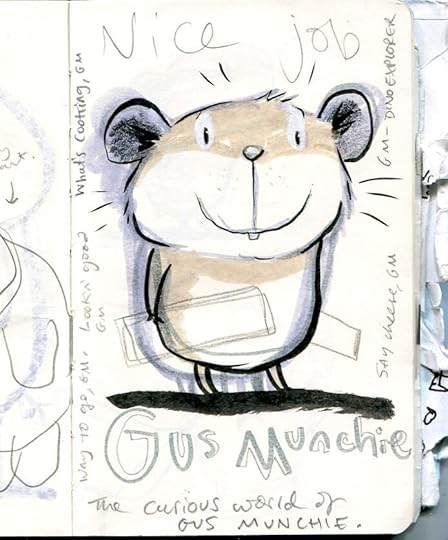
Development work for The Munchies by Tim Warnes | Illustration © 2011 by Tim Warnes
What the world needs now is love, sweet love.
It’s the only thing that there’s just too little of.
What the world needs now is love, sweet love.
No not just for some, but for everyone.
— Burt Bacharach
What the world needs now is love, sweet love.
That’s true. That’s always true.
But I’m hoping it also needs this: a dysfunctional family of anthropomorphic hamsters.
At the start of 2020, I had a plan.It did not involve COVID-19.
During the first quarter, I was going to re-evaluate my business and develop a strategy to help focus my attention. (That’s how I came up with my guiding principle: to connect adults with kids through stories worth sharing.) I had also scheduled time to write (including this blog), and develop some of my story seeds.
Regular readers will know that I liken the process of writing to growing a plant: a seed of an idea pops into my head, and I ruminate on it.
Then it gets put away in the deep recesses of my mind to germinate.
Every now and then, I pull it out, and very gradually, it begins to grow and change. The process applies equally to well to my story attempts, as it does to these blog posts.
So, a few days into the social distancing measures (when I was showering), a story seed idea popped back into my head. Why - or how - that happens, I don’t know. I’m sure there’s a scientific explanation somewhere. I can’t explain it, but its resurfacing was unexpected - and welcome.
“The air is full of ideas,” Henry Ford once said. “They are knocking you in the head all the time. You only have to know what you want, then forget it, and go about your business. Suddenly, the idea will come through. It was there all the time.”
As a man of faith, I’d say it was the Holy Spirit, prompting me to pick up this idea (from 2011!) and give it a little TLC - which makes me really excited! All I know is, the idea has rapidly developed. It has not been forced. I’ve worked hard on it, but it has flowed.
It’s a response to the pandemic crisis - and its associated problems, which affect us all, young and old alike. I want to acknowledge what we are experiencing and use it as a springboard to write something relevant, but positive and entertaining. The result has pathos, drama, humour - and a whole lot of love. I’m so excited!
Meet the Munchies.I’m writing it in diary format, from the point of view of Gus Munchie. It was always going to be about his chaotic family life. Now, the pandemic has given me an anchor point: Gus is in lockdown with his family - Mama and Dad Munchie, and little brother, Lunchbox (a.k.a. Squeaky-Stinks).

Development work for The Munchies by Tim Warnes | Illustration © 2011 by Tim Warnes
So you see, Tony’s not your average dad. But, then again, neither is he your average hamster.
It’s amusing to watch a hamster to stuff its cheeks, true. I once got Stinks to squish five marshmallows in his cheeks at once. And not the regular ones. Those giant American ones. It’s harmless fun for hamsters. We enjoy storing extra food away. To quote Your Perfect Hamster, ‘No matter how much you feed him, he will not overeat.’
They’ve never met Fat Tony.
Gramps says Dad used to be a long-haired hippy hamster. But now his fur’s all patchy and thin.
“What are you staring at?” says Dad.
“Your fur,” I say. “You’re going bald. You realise if you go completely bald you’ll look like a naked mole rat?”
Naked mole rats are like the nudists of the rodent world. They go about their lives, naked and free. How weird is that? In Hamsterdom, it’s the done thing to be fully-furred.
“Imagine if I was a naked mole rat,” says Dad. “I’d get to walk about starkers with my — ”
“Tony!” interrupts Mama. “That’s enough!”
I still have that picture in my mind. It will haunt me forever.
Many families have been isolating and resources for many have been severely stretched. That’s why I have decided to self publish The Munchies in daily instalments online - for free - hopefully before the end of May.
(I hope to record a narration, too, because I love listening to audio books, and this will be fun to read!)
Here’s another excerpt:
“Coronavirus is ruining my life!” I cry.‘Get over yourself, Gus,’ snaps Dad.
“I hate you!” I shout, slamming my bedroom door.
I don’t really hate Dad. It just sort of slipped out. Munchie Lockdown’s doing my head in. Why can’t things just go back to being normal again?
Oh yeah. We were never normal in the first place.
I hate what we’re going through as a global family right now, but I welcome the opportunity for me to try something new. I’ve always fancied writing longer children’s fiction. If The Munchies was in physical form, it would be an early chapter book: text-heavy but with plenty of illustrations.
This is my attempt to bring a few moments of light relief to families in isolation and locked down. If you’re new to my blog and would like to make sure you get to see The Munchies when it eventually launches, please:
Sign up using the form at the bottom of the page, or
Email me and I will add you to my subscribers’ list.
Gus Munchie usually has the last word, so I shall leave you with him:
I wonder if anyone will ever read this diary? I feel like it might lead the young and innocent astray. I probably have a moral responsibility to portray a more positive role model.
But where’s the fun in that?
Stay safe, friends!
SourcesWhat the World Needs Now - lyrics by Burt BacharachThe Munchies by Tim Warnes (previously unpublished 2020)April 23, 2020
The pertinence of Pooh

From Winnie-The-Pooh by A.A. Milne | Illustration © 1926 by Ernest H. Shepard
This is Serious ... I must have an Escape.
— Winnie-The-Pooh
Winnie-The-Pooh and The House at Pooh Corner are two of my favourite books from childhood.
My dad read them to us at bedtime in the evening (and if I was super lucky, so would Willie Rushton on Jackanory!).
What makes these books so enduring? And why do they still resonate today - perhaps now more than ever, with C-19 running amok?
For me, both Winnie-The-Pooh and Pooh Corner are Sustaining Books, such as would help and comfort a Locked Down Person in Great Isolation. They offer ‘innocence, simplicity and a happy place to escape.’ When we look back to the stories’ origins, it becomes clear why.
The animals in the stories came for the most part, from the nursery. My [wife] had already given them individual voices, their owner [cr] by constant affection had given them the twist in their features which denoted character, and Shepard drew them, as one might say, from the living model. They were what they are for anyone to see; I described rather than invented them. only Rabbit and Owl were my own unaided work.
- A.A. Milne
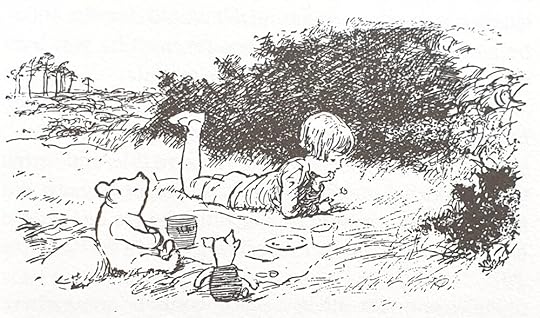
From Winnie-The-Pooh by A.A. Milne | Illustration © 1926 by Ernest H. Shepard
Some accounts say that the stories were sparked by games that he played with his son, Christopher Robin, and his infamous collection of stuffed toys. Except, Milne was kept at a distance from young Christopher by the presence of his beloved nanny. Christopher Robin reveals in his autobiography that ‘it was precisely because [my father] was not able to play with his small son that his longings sought and found satisfaction in another direction. He wrote about them instead.’
What we do know is that, only a few years before, Milne was a serving WW1 officer.
Milne and his men were sent to enable communications by laying telephone line dangerously close to an enemy position. He tried warning his command of the foolishness of the action to no avail. Two days later, he and his battalion were attacked… Sixty British men perished in an instant. Milne was one of the hundred or so badly wounded …
'Winnie the Pooh' Was Created by a Vet Explaining War to His Boy
“An Ambush,” said Owl, “is a sort of Surprise.”
“So is a gorse-bush sometimes,” said Pooh.
“An Ambush, as I was about to explain to Pooh,” said Piglet, “is a sort of Surprise.”
“If people jump out at you suddenly, that’s an Ambush,” said Owl.
“It’s an Ambush, Pooh, when people jump at you suddenly,” explained Piglet.
Pooh, who now knew what an Ambush was, said that a gorse—bush had sprung at him suddenly one day when he fell off a tree, and he had taken six days to get all the prickles out of himself.
“We are not talking about gorse-bushes,” said Owl a little crossly.
“I am,” said Pooh.
- Winnie-The-Pooh by A.A. Milne
As a result of his wounds suffered in the ambush, Milne was invalided home. Traumatised by his experience on the front line, Milne created an escape: his fictional Hundred Acre Wood. It became ‘a welcome sanctuary from the horrors of the Western Front that remained fresh in his mind and those of many readers in the 1920s.’
I think we could all do with an escape right now. And you’ll still be hard pushed to find anywhere as restful as Hundred Acre Wood (so wonderfully evoked by master illustrator, E.H. Shepherd, also a WW1 officer).A place where a community of disparate individuals, with their own flaws and limitations, work together for the common good, cementing friendships and facing adversity (and unseen Heffalumps) with a united front. It’s these qualities which makes Winnie the Pooh pertinent to us today.
Pooh is the poster-bear for mindfulness.
He models the skills of:
being present;
discovering the world around us;
listening to our bodies - and adjusting behaviour accordingly.
Skills that will help see us through this time.
I’m reminded of Thoreau’s insistence that “we must go out and re-ally ourselves to Nature every day.” This period of enforced lockdown and social-distancing has resulted in a welcome slowing-down for many. It’s allowing us the opportunity to reconnect and rediscover.
‘By and large, our world has lost its sense of wonder. We have grown up. We no longer catch our breath at the sight of a rainbow or the scent of a rose, as we once did. We have grown bigger and everything else smaller, less impressive,’ writes Brennan Manning in The Ragamuffin Gospel. The Pooh stories capture perfectly that sense of childhood and wonder that so many have lost.
Manning continues:
We get blasé and worldly-wise and sophisticated. We no longer run our fingers through water, no longer shout at the stars or make faces at the moon. Water is H2O, the stars have been classified, and the moon is not made of green cheese.
- The Ragamuffin Gospel by Brennan Manning
Pooh is not blasé or worldly-wise or sophisticated. He may be a Bear of Very Little Brain - but he is present and full of wonder, as this passage from Chapter 3 of Winnie-The-Pooh, illustrates:
[Winnie-the-Pooh] pointed to the ground in front of him. “What do you see there?”“Tracks,” said Piglet, “Paw-marks.” He gave a little squeak of excitement. “Oh, Pooh! Do you think it’s a - a- a Woozle?”
“It may be,” said Pooh. “Sometimes it is, and sometimes it isn’t. You never can tell with paw-marks.”

From Winnie-The-Pooh by A.A. Milne | Illustration © 1926 by Ernest H. Shepard
Piglet joins Pooh, who ‘had come to a sudden stop, and was bending over the tracks in a puzzled sort of way.’
“It’s a very funny thing,” said Bear, “but there seems to two animals now. This - whatever-it was - has been joined by another - whatever-it-is - and the two of them are now proceeding in company. Would you mind coming with me, Piglet, in case they turn out to be Hostile Animals?”
The two friends continue tracking through the snow, circling the spinney of larch-trees.

From Winnie-The-Pooh by A.A. Milne | Illustration © 1926 by Ernest H. Shepard
Suddenly, Winnie-the-Pooh stopped, and pointed excitedly in front of him. “Look!”
“What?” said Piglet, with a jump. And then, to show he hadn’t been frightened, he jumped and down once or twice more in an exercising sort of way.
“The tracks!” said Pooh. “A third animal has joined the other two!”
“Pooh!” cried Piglet. “Do you think it is another Woozle?”
“No,” said Pooh, “because it makes different marks. It is either Two Woozles and one, as it might be, Wizzle, or Two, as it might be, Wizzles and one, if so it is, Woozle. Let us continue to follow them.”
- Winnie-The-Pooh by A.A. Milne
Milne wrote his classic stories from a place of considerable uncertainty.
What did the future hold?
What would the new world order look like?
What chance did his friends and family have of surviving the times? - questions that many people are wondering today.
Perhaps now is the perfect time to dust down an old copy of Winnie-The Pooh or The House At Pooh Corner, and share them with a loved one. Or you could try listening to an audio version. (Even if you don’t have kids with you, and you’re a bit long-in-the-tooth, I’d highly recommend it as a way of relaxing and lifting your mood!)
We may, for the time being, have to resort to video and phone chat to connect.
But being together is what really counts.
GOOD TO READWinnie-the-Pooh by A.A. Milne, ill. by Ernest H. Shepard (Methuen 1926)
The House at Pooh Corner by A.A. Milne, ill. by Ernest H. Shepard (Methuen 1928)
GOOD TO LISTEN TOWinnie-the-Pooh / The House at Pooh Corner - read by Bernard Cribbins
Dramatised Pooh stories featuring Stephen Fry, Judi Dench, Jane Horrocks et al
Please try and support your local bookshop.
You may be able to borrow audio versions online from your local library service.
A good selection of Pooh books are also available via Waterstones:
SEARCH NOW
(This is an affiliate link)WARNING!download ‘free’ book PDFs at your peril! 99.9% of the time it will be a phishing scam.(You might get a free e-book - but the scammers will steal a whole load of your valuable information, including banking & credit card details!) SourcesWINNIE-THE-POOH BY A.A. MILNE, ILL. BY ERNEST H. SHEPARD (METHUEN 1926)THE OXFORD COMPANION TO CHILDREN’S LITERATURE BY DANIEL HAHN (OXFORD UNIVERSITY PRESS SECOND EDITION, 2015) 'Winnie the Pooh' Was Created by a Vet Explaining War to His Boy by Eric Milzarski (military.com, 19 Feb 2019) The True Story of the Real-Life Winnie-the-Pooh by Christopher Klein (history.com, OCT 13, 2016) The Ragamuffin Gospel by Brennan Manning (Multnomah 1990)
April 17, 2020
A Little Bit Worried
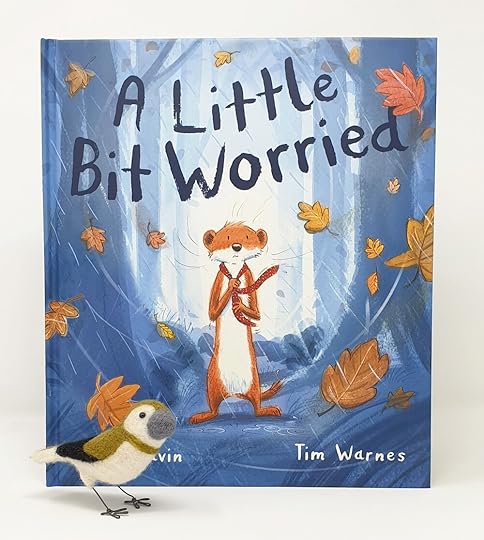
A Little Bit Worried by Ciara Gavin, ill. by Tim Warnes (Little Tiger Press 2020) | © 2020 by Tim Warnes
I think this is how we are all feeling right now. A little bit worried. Some of us more than others …
— @book.mother
Today I want to share some more about my book, A Little Bit Worried by Ciara Gavin (Little Tiger Press 2020)
When I received the first edit, the editor commented, ‘We would make small changes to the text to try and bring out the anxiety theme a little more. It feels very 'now' as a topic.’
It’s one year on, and sadly the anxiety theme feels even more ‘now’ than ever. Because the book’s release coincided perfectly with the sudden rise of the coronavirus pandemic. I immediately saw the parallels - fearful Weasel locks himself away, afraid of the raging storm outside. A Little Bit Worried seems to have struck a chord with many book reviewers and parents, too. So this week, I’m going to share some of their thoughts - and share the process behind bringing Ciara Gavin’s charming story to life.
You’d think it would be reasonably straight forward creating the characters. Well, yes and no.
Gavin had written the characters as ‘Weasel’ and ‘Mole’. Mole is good to go - everyone loves a mole! But Weasel?
‘Sales are not confident in having a weasel character so we would look to change this to another woodland creature,’ warned my editor.
But I really wanted the opportunity to draw a weasel - I just had to convince the sales team. I sent over some initial sketches to Little Tiger Press:
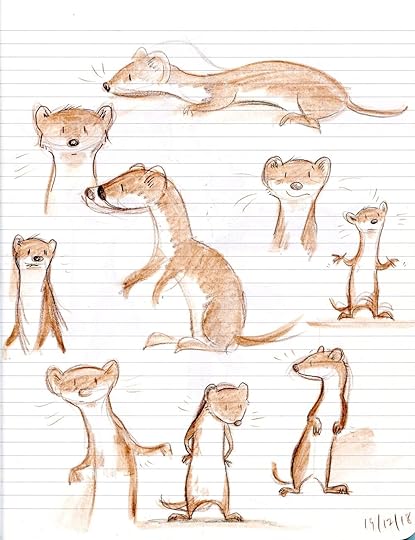
Development work for A Little Bit Worried | © 2018 by Tim Warnes
They replied:
The weasel has had a mixed response! Everyone loves him in principle but - as anticipated - there's a nervousness about what the actual customers might think.
Because there is this perception that weasels are wicked, duplicitous little creatures. Well, I wasn’t going to give up that easily. This time I sent some finished art samples.
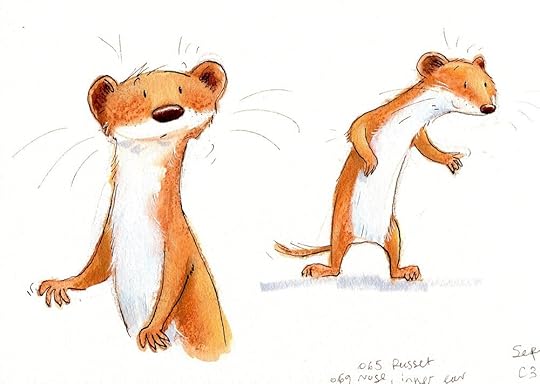
Development work for A Little Bit Worried | © 2018 by Tim Warnes
They did the trick! (And I think my editor - who was rooting for the weasel -was very persuasive.)
Either way, sales relented, and we were allowed to break the weasel stereotype. As the US title tells us: Weasel is Worried. But in her story, Gavin doesn’t use the word ‘worried’ to describe Weasel. Instead, it’s implied with her clever use of language, using words like nervously, fretted, shiver and frightened.
In the same way, one of my jobs as illustrator is to convey the characters’ emotions. So somewhere along the line, I came up with the idea of giving Weasel a necktie to fiddle with, to portray his anxious personality.
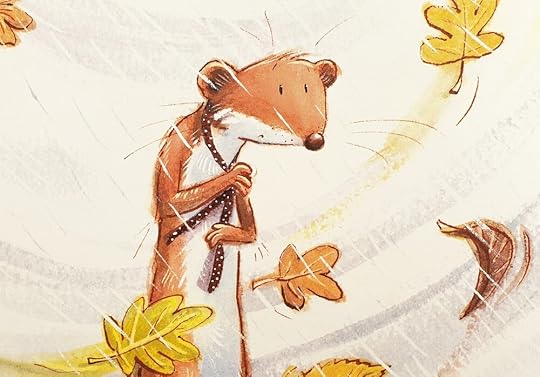
Detail from A Little Bit Worried by Ciara Gavin, ill. by Tim Warnes (Little Tiger Press 2020) | Illustration © 2020 by Tim Warnes
Now for Mole.
He kind of bucks the trend, too, because moles are often portrayed as shy, reserved and timid. Not this mole. He is full of beans and lovin’ life!
Despite having drawn many, many moles before, there was still a lot of discussion with the editorial team. To begin with, I wanted to illustrate a smaller, more lithe mole than my previous characterisations. With true-to-life teeny-tiny eyes - so I could give my mole spectacles!
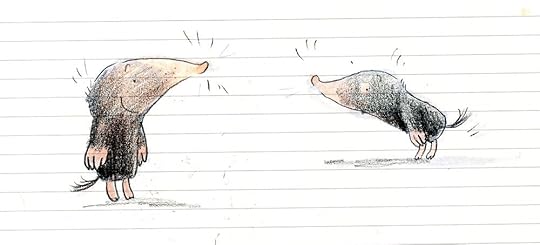
Development work for A Little Bit Worried | © 2018 by Tim Warnes
Here’s the feedback I received from my designer on the first round of drawings:
Mole is very sweet in his colour character, although we almost imagined him to be a bit more ‘rotund’ in the body, like he could rest his clasped fingers over his little podgy belly and recline in an armchair without a care in the world! Could you try making him a touch more podgy, with bigger eyes, and lowering the lids so he looks more relaxed and easy-going? … we really love his nose and snout when its straighter and a bit more snub, rather than wibbly. What do you think?
I had no idea what ‘a bit more snub, rather than wibbly’ nose meant, so I asked for clarification. Then, being none the wiser, I worked on Mole some more.

Development work for A Little Bit Worried | © 2018 by Tim Warnes

Development work for A Little Bit Worried | © 2018 by Tim Warnes
Bingo!
Character drawings are fantastic Mr T. Love them, mole is really funny and so so rotund, I think he must have an account at Greggs!!!!!
I can’t remember when I decided to give Mole a bowler (or derby) hat. Partly because I love hats; partly because I’d recently seen the movie, Stan and Ollie. Anyway, it turns out it was a good move, and inspired Creative Director Paul to create this backstory:
We love his ickle, ill-fitting hat. It was bought for him as a birthday present when he was a tiny mole and, altho’ he’s outgrown it he loves it so much he can't bear to be parted from it. (He’s also a massive fan of Laurel and Hardy!!!)
(I loved Laurel and Hardy as a kid. I think they subconsciously influenced the tie-fiddling Weasel, too!)

I shall hand over now to some recent reviewers of A Little Bit Worried.
(Emphasise in bold are mine.)
A fitting title and story, A Little Bit Worried speaks to what everyone around the world is going through. It's layered with so many important messages, we really fell in love with it!
When faced with a powerful storm, Weasel builds a fortress as a means to protect himself from the storm and the outside world. One day, Mole appears inside the fortress much to Weasel's dismay. Luckily for Weasel, he will soon learn how to overcome his fears thanks to Mole' help and support.
The story beautifully and gently addresses issues such as anxiety and fear in an age appropriate manner. Despite the underlying messages, the story is very uplifting and joyful! It really encourages children to become mindful and emphatic of struggles that are found within themselves and others. To appreciate and understand other people's perspective.
It also emphasizes how friends can support each other and how we can find joy in any situation. And the illustrations are so
April 10, 2020
Would you like to share a hug?

A hug for bear (unpublished) © by Tim Warnes
Hugs can do great amounts of good - especially for children.
— Princess Diana
I don’t know about you, but right now, I’m in serious need of some hugs.
I’m a very tactile person - so physical affection is important to me. During this coronavirus pandemic, I’m really missing the physical affection of friends and family.
I am blessed with lots of friends who express their affection and love with hugs. (I like strong, affirming, manly hugs best.) But now, I am deprived of them. Instead, I receive weird hug emojis (that, frankly, look kind of sinister).
So I made this little video to cheer myself up!
'Hug 'O War' by Shel Silverstein.Read by Maurice C. Hamster.
Taken from 'Where the Sidewalk Ends' by Shel Silverstein (Harper Row 1974).
The word ‘hug’ has its origins in the Old Norse word, hygga, which means ‘to comfort’ (which is also the likely source of the hip Danish word, hygge - ‘to give courage, comfort, joy’). We could all do with some of that right now.
During life B.C. (before COVID-19), if a friend told their kid to ‘give Tim a hug,’ I would gently express my view that to hug is a choice. Being forced to embrace (or receive hugs from) your aunt/uncle/grandparent can be traumatic for some. Just ask Maurice Sendak, who describes visiting uncles and aunts as having ‘bloodshot eyes and big huge noses and bad teeth.’
[T]hey would grab you by the cheek and pummel you and say all the conventional things like, ‘I’ll eat you up,’ and knowing them, they probably would and could.
- Sendak's Legacy: Helping Kids 'Survive Childhood'
In an NPR radio interview, Sendak goes into more detail:
[M]y entertainment was to examine them closely, you know, the huge nose, and the hair curling out of the nose and the weird mole on the side of the head, and so you would glue in on that, and then you’d talk about it with your brother or sister later, and they became the wild things.
- ‘ FRESH AIR’ REMEMBERS AUTHOR MAURICE SENDAK WITH TERRY GROSS
But for most of us, consensual hugging feels good - which is unsurprising, since they are ‘ an extended form of a fundamental human need: touch .’
Meaning hugs have positive effects on our health and well-being!
Hugs strengthen social bonds.
Hugs give you a better night’s sleep.
Hugs make me feel good!
They calm the nervous system, reduce stress and help relieve anxiety.
(Scientifically speaking, ‘feel-good’ hormones (Oxytocin, Seratonin and Dopamine) are released, and the ‘stress hormone’ (Cortisol) is suppressed.)
(And, rather ironically (now that we are social-distancing), turns out hugging increasing the number of natural killer cells, ‘the frontline of the immune system’.)
*sigh*
I wish I had a cat.
Though hugs may be strictly off-limits with anyone outside our household, we can share them virtually - and books that have loving hugging at their hearts can help.

HUG by Jez Alborough (Walker Books 2000) | Illustration © 2000 by Jez Alborough
HUG by Jez Alborough (Walker Books 2000) oozes warmth.
The story of Bobo, an endearing baby chimp, wandering the jungle alone in search of a hug, was a firm favourite when my kids were young. I still have their childhood copy of the story - a chunky, oversized (now well-chewed) board book edition.
There is a multitude of ‘lost’ themed picture books out there, some brilliant, some trite. HUG! stands out as a classic example of a well-crafted picture book. Alborough manages to tell the story - and engage us emotionally - using just his illustration and a single, repeated refrain, (presented in speech bubbles): Hug. That’s quite a skill!

HUG by Jez Alborough (Walker Books 2000) | Illustration © 2000 by Jez Alborough
HUG is smart and deceptively simple - made all the more appealing by Alborough’s absorbing jungle illustrations, of which The Guardian said, ‘[t]he big, bright pictures dance off the page with such exuberance that you can’t help but feel happy while you are looking at it.’
The elephants carry Bobo, helping him to find his mama. On the way they encounter happy animal families enjoying their hugs, to which Bobo responds - Hug.
You can see the little waif’s hope for a hug fading fast, as he becomes more and more crestfallen.
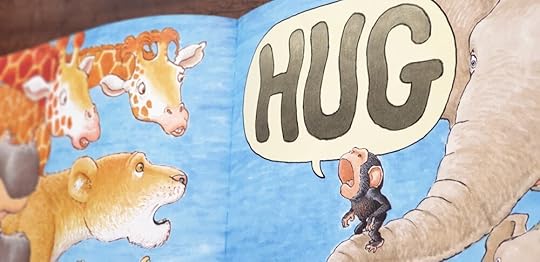
HUG by Jez Alborough (Walker Books 2000) | Illustration © 2000 by Jez Alborough
Just before your heart breaks for Bobo, he’s reunited in a comforting embrace with his Mama. So satisfying!
Seeing this takes me back to storytime with my boys. I wish I could hug one right now...
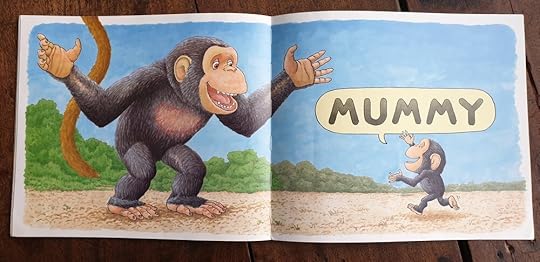
HUG by Jez Alborough (Walker Books 2000) | Illustration © 2000 by Jez Alborough
My next Good to Read is one of my own:I’m Going to Give You a Bear Hug! written by Caroilne B. Cooney (Zonderkids 2016).
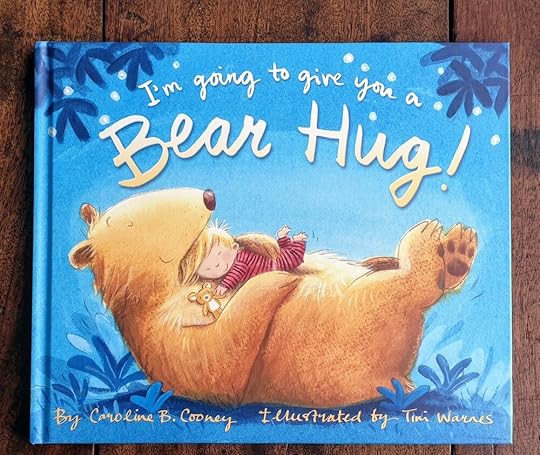
From I’m Going to Give You a Bear Hug! by Caroline B. Cooney, ill. by Tim Warnes (Zonderkidz 2016) | Illustration © 2016 by Tim Warnes
I’m always on the hunt for sweet, calming books that are perfect for bedtime. I’m Going to Give You a Bear Hug! is one of those books!
…
My triplet boys found this book especially sweet because all three of them hug me differently, and it’s something that we were able to talk and giggle about during our goodnight storytime.
- It Happens in a Blink
Despite its apparent simplicity, this project was really tricky!
Like Alborough in HUG!, I had to work out a way to apply a narrative thread to Cooney’s prose through my illustrations and bring an extra dimension to the story. Eventually, I hit upon the idea that the hugs were played out in the boy’s imagination over the course of getting ready for bed.
It was worth the effort - Bear Hug! has been well received, and has done well enough well for there to be a companion title, I’m Going to Give You a Polar Bear Hug! (scheduled for release later this year).
Melissa, on her A Sparkle of Genius blog wrote:
I’m Going to Give You a Bear Hug! is an adorable, creative, colorful book that makes the perfect bedtime story. It combines all of my favorite things and teaches our children all about the power of a hug. I love the imagination that this story portrays from the eyes of a child.
- A Sparkle of Genius
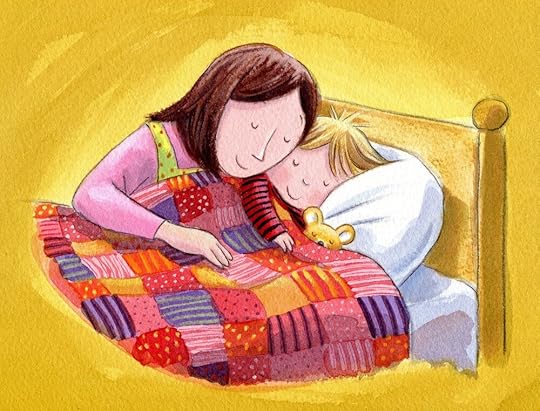
From I’m Going to Give You a Bear Hug! by Caroline B. Cooney, ill. by Tim Warnes (Zonderkidz 2016) | Illustration © 2016 by Tim Warnes
Finally, this - from a lovely email that I received last year from an appreciative mother, who wrote:
I purchased I’m Going to Give You a Bear Hug! … when [my son] was around two years old ... [I]t has been a favorite, even today at four. He told me tonight, while on the caterpillar bug hug page, that these pictures make him happy.
Isn’t that wonderful!
I hope and your little ones, whether near or far, can find a connection this Easter weekend that makes you feel happy. If you’re feeling the strain from being confined to the home with your kids, then at the end of the day, find a good book, and hug it out at storytime.
This separation from our loved ones, be they family or friends, may well be the trickiest thing we have to deal with during the coronavirus pandemic.
US CUSTOMERS CAN PURCHASE BEAR HUG DIRECTLY FROM ZONDERKIDZ USING THE LINK BELOWUK Customers - please support your local bookshopBUY BEAR HUG!
Available in soft padded Board Book and Hardback versions.
Alternatively, try your local bookshop or search online.
Books FOR HUGGING to!
Guess How Much I Love You by Sam McBratney, ill. by Anita Jeram (Walker Books 1994)
I Love You to the Moon and Back by Tim Warnes (Little Tiger Press 2015)
Daddy Hug by Tim Warnes, ill. by Jane Chapman (HarperCollins)
Mommy Hug by Tim Warnes, ill. by Jane Chapman (HarperCollins)
I’m Going to Give You a Bear Hug! by Rosemary B. Cooney, ill. by Tim Warnes (Zonderkidz 2016)
SourcesA-Z QuotesHug O’ War by Shel Silverstein. From Where the Sidewalk Ends (Harper Row 1974) The Science of Hugs: The Most Undervalued Gift You Can Give by Kulraj (kulraj.org, September 9, 2014)Wikipedia: Hygge Sendak's Legacy: Helping Kids 'Survive Childhood' by Lauren Silverman (NPR, May 8, 2012) ‘ FRESH AIR’ REMEMBERS AUTHOR MAURICE SENDAK WITH TERRY GROSS Hugging – 7 Backed-by-Science Benefits (Parenting For Brain)HUG by Jez Alborough (Walker Books 2000)I’M GOING TO GIVE YOU A BEAR HUG! BY CAROLINE B. COONEY, ILL. BY TIM WARNES (ZONDERKIDZ 2016) I’M GOING TO GIVE YOU A BEAR HUG CHILDREN’S BOOK REVIEW (It Happens in a blink, February 3, 2017) 6 SCIENCE-BACKED REASONS WHY YOU SHOULD GO HUG SOMEONE NOW (Brainfodder.org) The Shocking Truth Behind Hugs by Susanna Newsonen (The Happyologist)April 3, 2020
Rabbit & Bear

From Sorry! by Norbert Landa, ill. by Tim Warnes (Little Tiger Press 2005) | Illustration © 2005 by Tim Warnes
I’ve written before about the plethora of bears and rabbits and mice (and moles!) in kid’s books. Publishers can’t seem to get enough of them.
For example, my book, Sorry! written by Norbert Landa (Little Tiger Press 2009). I’m still pleased with my art (and I really like the quirky tone of Landa’s writing).
Bear and Rabbit were the best friends you can imagine.
They lived in their Bear-Rabbit house.
They cooked their Bear-Rabbit meals in their Bear-Rabbit kitchen.
Rabbit was better at frying mushrooms.
Bear was perfect at making honey-cakes.
Here they are sharing a story in their treehouse. (Note the Miffy reference!)
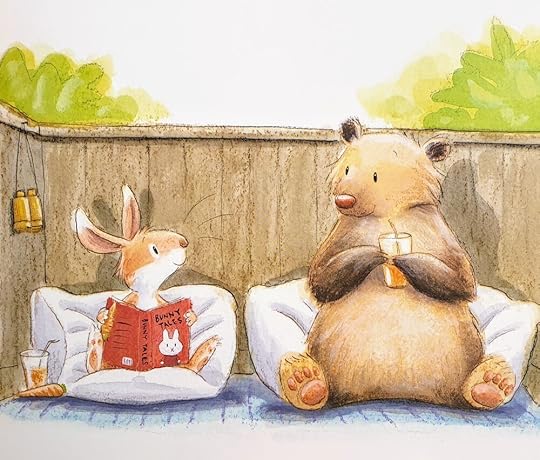
From Sorry! by Norbert Landa, ill. by Tim Warnes (Little Tiger Press 2005) | Illustration © 2005 by Tim Warnes
Sorry! is firmly in classic picture book territory: predictably, the best friends squabble and fall-out. Each realises the error of their ways, seek reconciliation, and the conflict is resolved. All’s well that ends well. (No surprises there, then!)
So if it’s a satisfying, gently moral tale with quality illustrations that you’re after - then look no further.
If, however, you fancy something rather more anarchic, expressive and funny, then please - step this way…
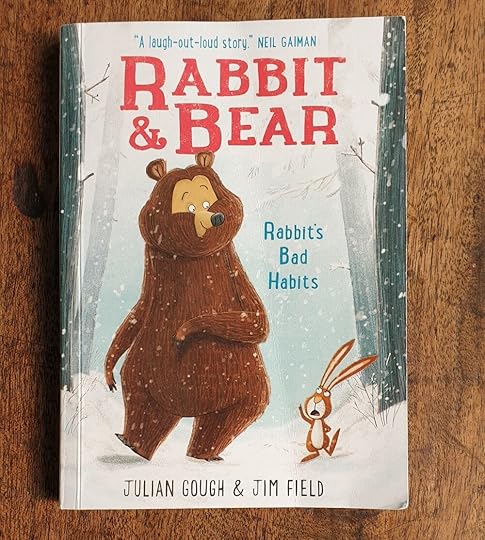
Rabbit & Bear: Rabbit’s Bad Habits by Julian Gough, ill. by Jim Field (Hodder 2016) | Illustration © 2016 by Jim Field
My Good to Read recommendation this week is the first in the Rabbit & Bear series from Julian Gough and Jim Field: Rabbit & Bear: Rabbit’s Bad Habits (Hodder 2016).
Now, whereas my rabbit in Sorry! loses his temper and strides back home to slam the door, this rabbit notches up the tension somewhat.
He’s one bumptious bunny, to be sure.
“Now if you could do me a favour…”
“I’d be delighted,” said Bear.
Rabbit nodded. “Go away,” he said…
‘I love trying to capture the fantastic humor of Rabbit’s character with his furious frown, or stomping his feet, or whether he is leaping in the air in his overly melodramatic way,’ says illustrator Field. ‘It cracks me up drawing him.’
And he does an AMAZING job, with stylish turquoise and grey toned illustrations.
In contrast to the supercilious Rabbit, Bear is gentle, patient and naive.
“My Grandfather was buried in an Avalanche [,” said Rabbit.]
“He had to eat his own leg to survive, while he was waiting for them to dig him out.”
“Really?” said Bear, impressed. “He must have been buried for a very long time.”
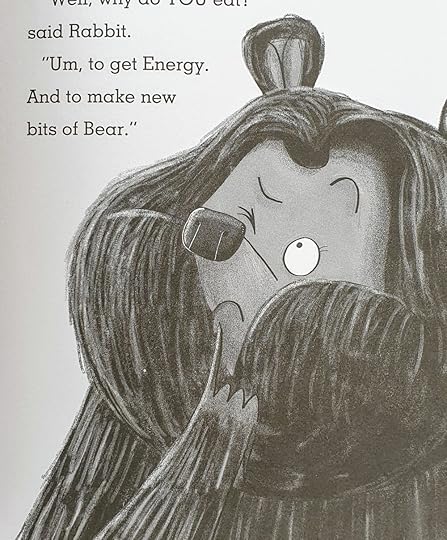
Detail from Rabbit & Bear: Rabbit’s Bad Habits by Julian Gough, ill. by Jim Field (Hodder 2016) | Illustration © Jim Field 2016
Rabbit’s Bad Habits is typical of kids’ books, in that it is about friendship - with the additional frisson of danger as a wolf is thrown into the mix. Rabbit is rescued by Bear, Wolf is defeated, and Rabbit and Bear become friends. Huzzah!
But that’s pretty much where the similarities end.
Because, unlike most children’s books, Rabbit’s Bad Habits has the feel, format (and language) of a chapter book for early readers - yet is fully illustrated throughout like a picture book. And you’ll find none of the insipid, frankly boring characters that often populate children’s books. Instead, we have some great characterisation, drawn out in the witty dialogue and excellent art.
And it really is funny.
Like Judith Kerr’s The Tiger Who Came to Tea, Gough created Rabbit’s Bad Habits as an antidote to reading ‘the most boring picture book on earth’ to his daughter: ‘There was no conflict; no drama; no STORY,’ he bemoans. ‘All the animals were polite, well-behaved, and perfect. They had nothing to learn, and nowhere to go. No problem to solve.’
(For the same reason, Mo Willems created his Elephant & Piggie characters.)
So with the help of his daughter, Gough started working on their own story, hoping to create a mash-up of Winnie-the-Pooh and David Attenborough - combining complicated, funny (and interesting) characters, with the weird, real-life facts of wildlife documentaries.
‘[N]o animal I know is nice, friendly and perfect. How boring would THAT be? Animals wee on the carpet sometimes, and sniff each other’s bottoms ALL the time, and chew the furniture. And that’s just our pet cat…
And wild animals… are even wilder than that! What is the point of having bears and rabbits in your story if they aren’t WILD, and doing the crazy, surprising, and often rather rude things real bears and rabbits do?
- Julian Gough (I wanted to mash up Winnie the Pooh and David Attenborough)
Rabbit has many bad habits.
Not only is he irascible and uppity (and a thief to boot), but the Law of Nature dictates behaviour that some, like Bear, might find rather uncouth.
After eating ‘lots and lots AND LOTS of the honey, and frozen salmon and delicious beetles’ eggs, that he’d stolen off Bear during the storm’, Rabbit ‘did a little poo and then ate it.’
Just look at Rabbit’s furtive expression!
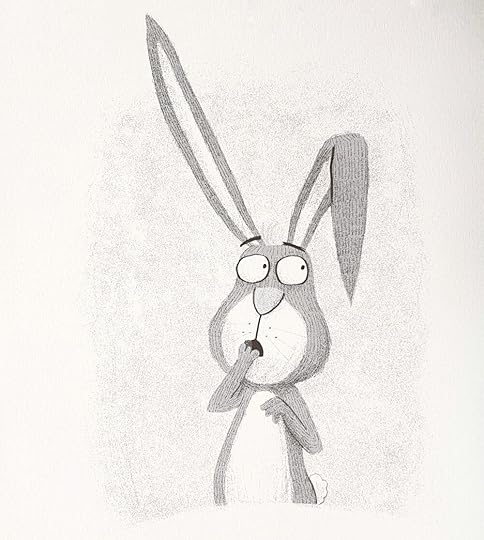
Detail from Rabbit & Bear: Rabbit’s Bad Habits by Julian Gough, ill. by Jim Field (Hodder 2016) | Illustration © Jim Field 2016
This rather embarrassing habit was the reason Rabbit never invited people over for tea.
The following page, where Bear pokes her head into Rabbit’s burrow (“I forgot to say thanks for the carrot,” said Bear’s voice right behind Rabbit), made me laugh out loud.
Poor Rabbit jumps out of his skin!
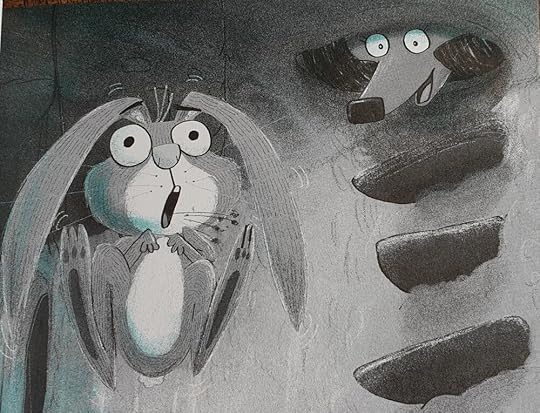
Detail from Rabbit & Bear: Rabbit’s Bad Habits by Julian Gough, ill. by Jim Field (Hodder 2016) | Illustration © Jim Field 2016
“I say, Rabbit, did you just eat your own poo?” said Bear, wondering if she’d seen right.
“Ah,” said Rabbit. “Yes. A little bit.”
“A little bit of YOUR OWN POO?” asked Bear, wondering if she’d heard right.
“Shush!” said Rabbit, glancing around. “Look, all rabbits do it. It’s perfectly normal.”
“For a rabbit, maybe,” said Bear.
Genius!
As a rule, I don’t like toilet humour. I think it’s unsophisticated and irritating. (Fortunately, my kids didn’t go around shouting, “Poo! Wee! Bum!” all the time. I know - it’s perfectly normal, plenty of kids do. But it’s still irritating.)
But Gough’s writing is not unsophisticated. It’s very clever - and funny! And as with all good stand up comedy, the humour is based on real-life observation.
As Rabbit points out (somewhat defensively) - “I’m sure bears do some things in the woods that they wouldn’t like to talk about.”
Now here comes that Attenborough influence. Caught in the act of doing his Private Business, Rabbit is left with no choice but to explain to Bear (with the aid of a diagram drawn in the snow) how the digestive system of rabbits works!

From Rabbit & Bear: Rabbit’s Bad Habits by Julian Gough, ill. by Jim Field (Hodder 2016) | Illustration © Jim Field 2016
[I] t’s really, really difficult to make a rabbit out of plants… Because when you’ve eaten the plants, and digested them in your tummy for hours, and pooed them…the job is only half done!”
“No energy?” said Bear.
“None!” said Rabbit.” The energy is still trapped in the poo! It’s sort of soft and black, like licorice… So you have to eat your own poo, …and digest it ALL OVER AGAIN to get the energy out.
“Really?” said Bear. For some reason she wasn’t hungry anymore.
This passage reminded me of the brilliant natural history book, Poo: A Natural History of the Unmentionable by scientist-author Nicola Davies and Neal Layton (Walker Books 2004):
- Nicola Davies Poo: A Natural History of the Unmentionable, ill. By Neal Layton (Walker Books 2004)
Rabbits, for example, simply can’t get all the nourishment they need from their food unless they digest it twice. And the simplest way to do that is to tuck into their own faeces. First, bunny eats fresh green leaves or grass, which passes through its digestive system and pops out as soft, dark pellets of poo. The rabbit eats these, still warm, straight from its bottom, and the food gets digested for a second time. After that, bunny has got all the nourishment it can from its meal…
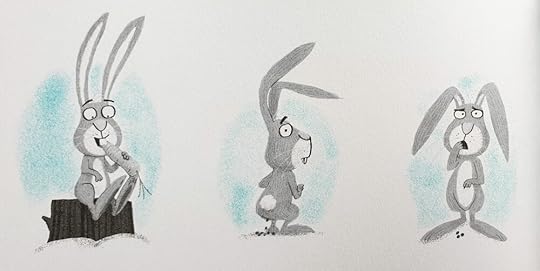
Detail from Rabbit & Bear: Rabbit’s Bad Habits by Julian Gough, ill. by Jim Field (Hodder 2016) | Illustration © Jim Field 2016
Rabbit’s Bad Habits is multi-faceted. At face value, it’s a straight-up story about friendship, with some solid scientific facts thrown in. But I think Gough understood that he was also presenting opportunities for more in-depth, philosophical discussions with your kid:
“From dawn to dusk, you’re eating and pooing,” said Rabbit gloomily. “And half the time you’re eating poo. It’s an awful life.”
No wonder Rabbit is so grumpy!
It also explains - without casting moral judgement - why, at the very start of the book, Rabbit steals Bear’s food: because it was full of energy. (And so much tastier than poo!)
Rabbit & Bear is anything but predictable. It is, as Neil Gaiman put it, ‘a breath of fresh air.’
And as Kirkius Review summarised so well: Young readers will come away with fresh insights into both poo and peacemaking.
Find the authors online:www.juliangough.comwww.jimfield.meGood to ReadA fun and factual book about poo
Nicola Davies Poo: A Natural History of the Unmentionable, ill. By Neal Layton (Walker Books 2004)
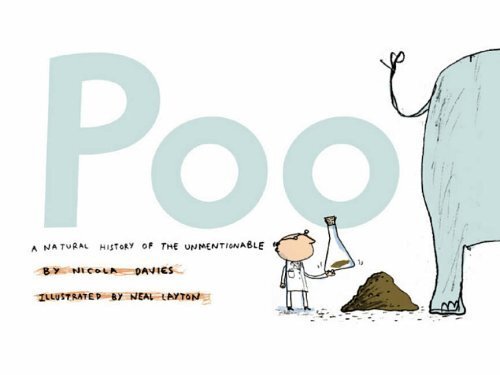
SourcesSorry! by Norbert Landa, ill. by Tim Warnes (Little Tiger Press 2009)Rabbit & Bear: Rabbit’s Bad Habits by Julian Gough, ill. by Jim Field (Hodder 2016) An Interview with Illustrator Jim Field (Silver Dolphin Books’ blog)Julian Gough: I wanted to mash up Winnie the Pooh and David Attenborough (The Guardian, 24 March, 2016) Rabbit’s Bad Habits review (Kirkus Books)
March 27, 2020
</em#x3E; It’s Little Wolf!
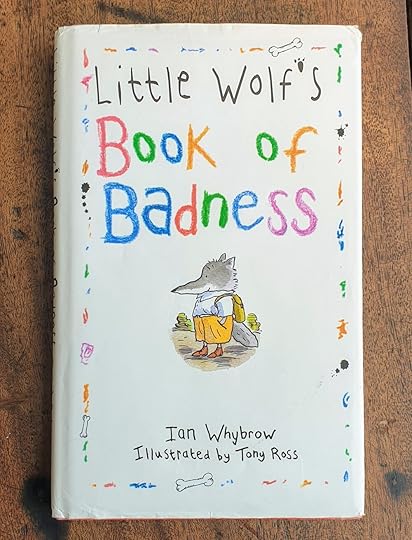
Little Wolf’s Book of Badness by Ian Whybrow, ill. by Tony Ross (Collins 1995) | Illustration © 1995 by Tony Ross
What a weird time this is. Covid-19 is on a global rampage, leaving everyone feeling discombobulated.
It feels like we’re in free fall - that anything could happen next. Which is a good reason to ground ourselves in the present, and be thankful for the blessings around us. I have the sun on my back, and it feels good. I am still fortunate enough to be able to go out for walks in the Dorset countryside. But by the time I publish the article, the world could look very different again.
Out in Spain, my sister and nephew Isaac’s fifteen-day lockdown has been extended by a further two weeks. Isaac (aged seven) and I now video chat each day. (Before the pandemic, we rarely spoke on the phone). It’s been so much fun! Partly because I get to put on my performer’s hat and read aloud to him. And the book I’m sharing? Little Wolf’s Book of Badness by Ian Whybrow, illustrated by Tony Ross (Collins 1995).
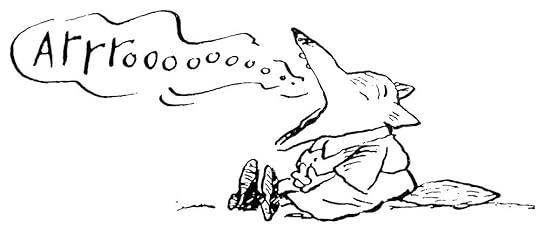
From Little Wolf’s Book of Badness by Ian Whybrow, ill. by Tony Ross (Collins 1995) | Illustration © 1995 by Tony Ross
I once had to illustrate two naughty wolf cubs. They make a cameo appearance in Boris Goes Camping (Oxford University Press), and trash Camp Cluck. But this Little Wolf isn’t naughty enough (according to his parents, at least). So he’s sent away to Cunning College to learn the 9 Rules of Badness and earn a Gold BAD Badge, from none other than his wicked Uncle Bigbad. (All Little Wolf wants to do, meanwhile, is stay at home with his baby brother, Smellybreff.)
Little Wolf’s Book of Badness is the first in a series. Stuck to the front endpaper of my hardback edition is an unassuming manilla envelope with a warning sticker: KEEP YOUR PAWS OFF. And inside - a secret letter from Little Wolf’s dad to his brother, Uncle Bigbad - begging him to ‘make a beast of Little Wolf’:
Little is a bad boy at heart, I am sure, but he is worryingly well-behaved at the moment. He has been far too nice to Smellybreff, his baby brother, and only yesterday he went to bed early without being growled at. …
I bought my copy from Harrods of all places. I’m so glad I did, because Little Wolf has become one of my favourite stories to read aloud. Jane read it to me first, when we were on holiday in Cornwall. Years later, I read daily instalments at a children’s holiday club; then to my own kids, of course. And now, nephew Isaac.
The story itself consists of Little Wolf’s letters home, with great pen and ink illustrations (and splatters) by Tony Ross. Here’s how it begins:
On the road to Lonesome Lake Day 1 - morning
Dear Mum and Dad,
Please please PLEEEEEZ let me come home. I have been walking and walking all day, and guess how far? Not even ten miles, I bet. I have not even reached Lonesome Lake yet. You know I hate going on adventures. So why do I have to go hundreds of miles to Uncle Bigbad’s school in the middle of a dark damp forest?
That night, Little Wolf writes some more.
I am a bit lost…
[T]he moon has come up and I can just see my pen and paper but I wish it was brighter. My tent is stupid. It falls down all the time, so I have curled up in my rucksack. Camping is my worst thing, and maps too. I am frozz, I am hopeless.
Yours tiredoutly,
Little Wolf
A former teacher who writes with both adult and young readers in mind, author Whybrow ‘has a brilliant ear for voices and takes pride in the fact that his work reads aloud very well.’ So says the jacket flap blurb - and it’s true!
The result is some solid characterisation written with dry humour, like this:
… [I] did do a trick on a beetle today. I said, “Hello, sonny, would you like to play a game?”
So he said, “OK, why not?” So I said, “Go on then, say ‘What is the time, Mister Wolf’.”
So he said, “Why?” So I said, “You will see in a minute.” So he said, “OK. What is the time, Mister Wolf?” and I said, “DINNER TIME, har, har!”
He was quite tasty.
Wait til Uncle hears that, he will make me a prefect, I bet!
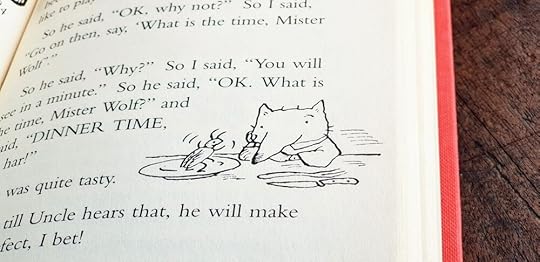
From Little Wolf’s Book of Badness by Ian Whybrow, ill. by Tony Ross (Collins 1995) | Illustration © 1995 by Tony Ross
Rule number 5, in particular, has tickled Isaac’s funny-bone: If it squeaks, eat it.
Like myself (and, I’m increasingly discovering, kid lit greats like Richard Scarry and Eric Carle), Whybrow has strong memories of being read to as a child: ‘I loved the sense that my mother and father were enjoying themselves too. For me, that’s the real acid test for any good book - that there’s something in it for everyone to enjoy.’ No wonder Isaac and I are having so much fun sharing the book together!
At the start of each session, we howl like Little Wolf - Arrroooo! Using video chat when I can, I hold up the pictures for him to see. I’m often interrupted by frequent questions - but that’s all part of the fun! Sometimes Isaac directs his question at Little Wolf (“How did you get up onto the roof?”), in which case I reply in character. (Leading to the curiously creative scenario where I am taking someone else’s creation and giving it further life.)

Isaac: “Super-Uncle Tim - is Frettnin Forest near you or no?”
Me: “No - is it anywhere near you?”
Isaac: “No! I’m absolutely nowhere near Frettnin Forest. I’m near the beach. I live in a massive urbanisation similar to a town. Does Uncle eat whole pizzas without cutting them - all in one piece? … What’s a disguise?… What’s a cub scout?…”
(These interactions are made all the more precious, since Isaac is autistic.)
On Day 10, Little Wolf arrives at Cunning College - and the sense of impending doom is rising.
Much too late to ring the bell. If I wake up Uncle now he is sure to eat me. … I just hope [he] isn’t too cruel. I do not want to get boiled.
This could be my last letter.
Ever.
And it will be all your fault.
Yours damply,
Master L Wolf
Brilliant!
The following day, Little Wolf plucks up the courage and rings on the doorbell - ding ding.
Next thing, boom boom, big feet coming down the hall, loads of huff and puff.
The door of Cunning College creaks open - eeeeee-aaaaah - to reveal the villainous Uncle Bigbad!
Uncle Bigbad [is] all tall and thin and horrible... His eyebrows are furry like caterpillars and they join in the middle. He is very fierce, and he has got great big red eyes and great big long yellow teeth and great big long streams of dribble dribbling down. He reminds me a bit of Dad, but hungrier.

Whybrow’s text is perfectly matched with Ross’s art. The Oxford Companion to Children’s Literature notes that ‘Ross has an anarchic, comedic style and does not gloss over the darker parts of the stories he illustrates.’ Little Wolf allows him to illustrate rabbit rolls, mice pies and of course, the iconic Big, Bad Wolf.
Unsurprisingly, Bigbad does not appreciate the arrival of his nephew -
He snarled his great big horrible snarl and he said in his great big horrible posh voice, “GGGRRR! BEGONE VILE BALL OF FLUFF! FLY AND FLEE OR I SHALL FETCH THE VACUUM CLEANER AND HOOVER YOU UP OFF MY FRONT STEP!”
I love the pointers from Whybrow as to how to make Uncle Bigbad sound: posh AND LOUD!
Here’s my take on his characters: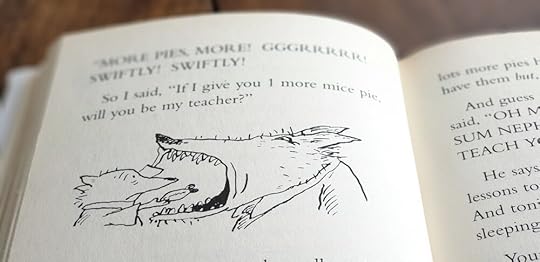
I shan’t give away the ending of Little Wolf. Suffice to say, our brave cub earns his BAD badge (in a roundabout kind of way) - and the adventure ends with a bang!
I’m planning on working out a way of sharing storytime with a broader group, most likely via a prerecorded video.But nothing beats that interactive, intimacy of sharing a story with one or two children - even if it has to be done remotely. There is great concern as to what the long term impact of C-19 social distancing and isolation policies will have on our kids. But we can all do our part to help support them. The president of Sesame Workshop (the nonprofit educational organisation behind Sesame Street) explains: “The most important thing is for children to have caring adults that they’re engaged with.”
Is there a small person in your life who you could read to during this time of social distancing? Maybe not a family member - but a child you know? Please consider reaching out to them (if only to give their carers a break!). If your internet connection can handle it, then video chat is great! If not, a regular phone call will work. It will help open up conversations about all sorts of things - so don’t try and suppress the interruptions as you read. The point is, you’re engaging and connecting. Who cares if the book goes unread?
Life is short, so let’s make it sweet where we can.
Here’s some picture books that I have illustrated over the years for Ian Whybrow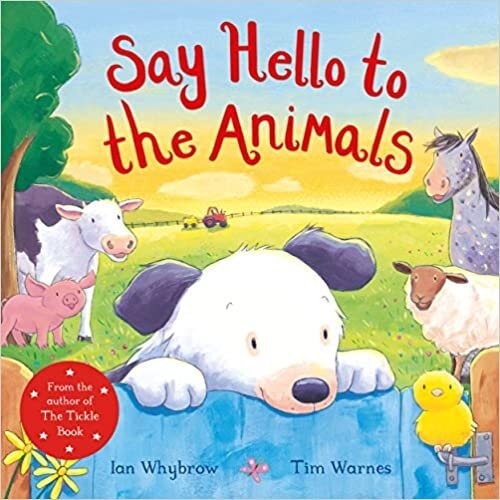
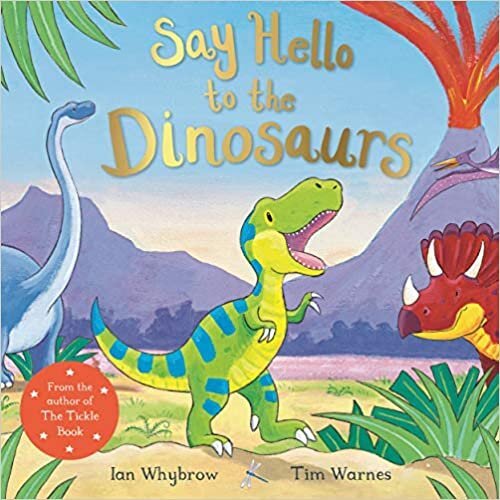
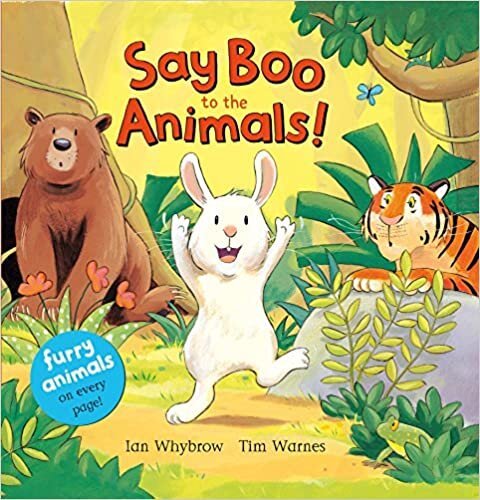
Do you have a childhood book that comforts you?Please let me know! Sources Little Wolf’s Book of Badness by Ian Whybrow, ill. by Tony Ross (Collins 1995) THE OXFORD COMPANION TO CHILDREN’S LITERATURE BY DANIEL HAHN (OXFORD UNIVERSITY PRESS SECOND EDITION, 2015) Love and Structure Will Carry Us Through by Jessica Grose (The New York Times: Parenting, March 25, 2020)
Arrroooo! It’s Little Wolf!

Little Wolf’s Book of Badness by Ian Whybrow, ill. by Tony Ross (Collins 1995) | Illustration © 1995 by Tony Ross
What a weird time this is. Covid-19 is on a global rampage, leaving everyone feeling discombobulated.
It feels like we’re in free fall - that anything could happen next. Which is a good reason to ground ourselves in the present, and be thankful for the blessings around us. I have the sun on my back, and it feels good. I am still fortunate enough to be able to go out for walks in the Dorset countryside. But by the time I publish the article, the world could look very different again.
Out in Spain, my sister and nephew Isaac’s fifteen-day lockdown has been extended by a further two weeks. Isaac (aged seven) and I now video chat each day. (Before the pandemic, we rarely spoke on the phone). It’s been so much fun! And the book I’m sharing? Little Wolf’s Book of Badness by Ian Whybrow, illustrated by Tony Ross (Collins 1995).

From Little Wolf’s Book of Badness by Ian Whybrow, ill. by Tony Ross (Collins 1995) | Illustration © 1995 by Tony Ross
I once had to illustrate two naughty wolf cubs. They make a cameo appearance in Boris Goes Camping (Oxford University Press), and trash Camp Cluck. But this Little Wolf isn’t naughty enough (according to his parents, at least). So he’s sent away to Cunning College to learn the 9 Rules of Badness and earn a Gold BAD Badge, from none other than his wicked Uncle Bigbad. (All Little Wolf wants to do, meanwhile, is stay at home with his baby brother, Smellybreff.)
Little Wolf’s Book of Badness is the first in a series. Stuck to the front endpaper of my hardback edition is an unassuming manilla envelope with a warning sticker: KEEP YOUR PAWS OFF. And inside - a secret letter from Little Wolf’s dad to his brother, Uncle Bigbad - begging him to ‘make a beast of Little Wolf’:
Little is a bad boy at heart, I am sure, but he is worryingly well-behaved at the moment. He has been far too nice to Smellybreff, his baby brother, and only yesterday he went to bed early without being growled at. …
I bought my copy from Harrods of all places. I’m so glad I did, because Little Wolf has become one of my favourite stories to read aloud. Jane read it to me first, when we were on holiday in Cornwall. Years later, I read daily instalments at a children’s holiday club; then to my own kids, of course. And now, nephew Isaac.
The story itself consists of Little Wolf’s letters home, with great pen and ink illustrations (and splatters) by Tony Ross. Here’s how it begins:
On the road to Lonesome Lake Day 1 - morning
Dear Mum and Dad,
Please please PLEEEEEZ let me come home. I have been walking and walking all day, and guess how far? Not even ten miles, I bet. I have not even reached Lonesome Lake yet. You know I hate going on adventures. So why do I have to go hundreds of miles to Uncle Bigbad’s school in the middle of a dark damp forest?
That night, Little Wolf writes some more.
I am a bit lost…
[T]he moon has come up and I can just see my pen and paper but I wish it was brighter. My tent is stupid. It falls down all the time, so I have curled up in my rucksack. Camping is my worst thing, and maps too. I am frozz, I am hopeless.
Yours tiredoutly,
Little Wolf
A former teacher who writes with both adult and young readers in mind, author Whybrow ‘has a brilliant ear for voices and takes pride in the fact that his work reads aloud very well.’ So says the jacket flap blurb - and it’s true!
The result is some solid characterisation written with dry humour, like this:
… [I] did do a trick on a beetle today. I said, “Hello, sonny, would you like to play a game?”
So he said, “OK, why not?” So I said, “Go on then, say ‘What is the time, Mister Wolf’.”
So he said, “Why?” So I said, “You will see in a minute.” So he said, “OK. What is the time, Mister Wolf?” and I said, “DINNER TIME, har, har!”
He was quite tasty.
Wait til Uncle hears that, he will make me a prefect, I bet!

From Little Wolf’s Book of Badness by Ian Whybrow, ill. by Tony Ross (Collins 1995) | Illustration © 1995 by Tony Ross
Rule number 5, in particular, has tickled Isaac’s funny-bone: If it squeaks, eat it.
Like myself (and, I’m increasingly discovering, kid lit greats like Richard Scarry and Eric Carle), Whybrow has strong memories of being read to as a child: ‘I loved the sense that my mother and father were enjoying themselves too. For me, that’s the real acid test for any good book - that there’s something in it for everyone to enjoy.’ No wonder Isaac and I are having so much fun sharing the book together!
At the start of each session, we howl like Little Wolf - Arrroooo! Using video chat when I can, I hold up the pictures for him to see. I’m often interrupted by frequent questions - but that’s all part of the fun! Sometimes Isaac directs his question at Little Wolf (“How did you get up onto the roof?”), in which case I reply in character. (Leading to the curiously creative scenario where I am taking someone else’s creation and giving it further life.)

Isaac: “Super-Uncle Tim - is Frettnin Forest near you or no?”
Me: “No - is it anywhere near you?”
Isaac: “No! I’m absolutely nowhere near Frettnin Forest. I’m near the beach. I live in a massive urbanisation similar to a town. Does Uncle eat whole pizzas without cutting them - all in one piece? … What’s a disguise?… What’s a cub scout?…”
(These interactions are made all the more precious, since Isaac is autistic.)
On Day 10, Little Wolf arrives at Cunning College - and the sense of impending doom is rising.
Much too late to ring the bell. If I wake up Uncle now he is sure to eat me. … I just hope [he] isn’t too cruel. I do not want to get boiled.
This could be my last letter.
Ever.
And it will be all your fault.
Yours damply,
Master L Wolf
Brilliant!
The following day, Little Wolf plucks up the courage and rings on the doorbell - ding ding.
Next thing, boom boom, big feet coming down the hall, loads of huff and puff.
The door of Cunning College creaks open - eeeeee-aaaaah - to reveal the villainous Uncle Bigbad!
Uncle Bigbad [is] all tall and thin and horrible... His eyebrows are furry like caterpillars and they join in the middle. He is very fierce, and he has got great big red eyes and great big long yellow teeth and great big long streams of dribble dribbling down. He reminds me a bit of Dad, but hungrier.

Whybrow’s text is perfectly matched with Ross’s art. The Oxford Companion to Children’s Literature notes that ‘Ross has an anarchic, comedic style and does not gloss over the darker parts of the stories he illustrates.’ Little Wolf allows him to illustrate rabbit rolls, mice pies and of course, the iconic Big, Bad Wolf.
Unsurprisingly, Bigbad does not appreciate the arrival of his nephew -
He snarled his great big horrible snarl and he said in his great big horrible posh voice, “GGGRRR! BEGONE VILE BALL OF FLUFF! FLY AND FLEE OR I SHALL FETCH THE VACUUM CLEANER AND HOOVER YOU UP OFF MY FRONT STEP!”
I love the pointers from Whybrow as to how to make Uncle Bigbad sound: posh AND LOUD!
Here’s my take on his characters:
I shan’t give away the ending of Little Wolf. Suffice to say, our brave cub earns his BAD badge (in a roundabout kind of way) - and the adventure ends with a bang!
I’m planning on working out a way of sharing storytime with a broader group, most likely via a prerecorded video.But nothing beats that interactive, intimacy of sharing a story with one or two children - even if it has to be done remotely. There is great concern as to what the long term impact of C-19 social distancing and isolation policies will have on our kids. But we can all do our part to help support them. The president of Sesame Workshop (the nonprofit educational organisation behind Sesame Street) explains: “The most important thing is for children to have caring adults that they’re engaged with.”
Is there a small person in your life who you could read to during this time of social distancing? Maybe not a family member - but a child you know. Please consider reaching out to them (if only to give their carers a break!). If your internet connection can handle it, then video chat is great! If not, a regular phone call will work. It will help open up conversations about all sorts of things - so don’t try and suppress the interruptions as you read. The point is, you’re engaging and connecting. Who cares if the book goes unread?
Life is short, so let’s make it sweet where we can.
Here’s some picture books that I have illustrated over the years for Ian Whybrow


Do you have a childhood book that comforts you?Please let me know! Sources Little Wolf’s Book of Badness by Ian Whybrow, ill. by Tony Ross (Collins 1995) THE OXFORD COMPANION TO CHILDREN’S LITERATURE BY DANIEL HAHN (OXFORD UNIVERSITY PRESS SECOND EDITION, 2015) Love and Structure Will Carry Us Through by Jessica Grose (The New York Times: Parenting, March 25, 2020)
March 20, 2020
Facing the storm together
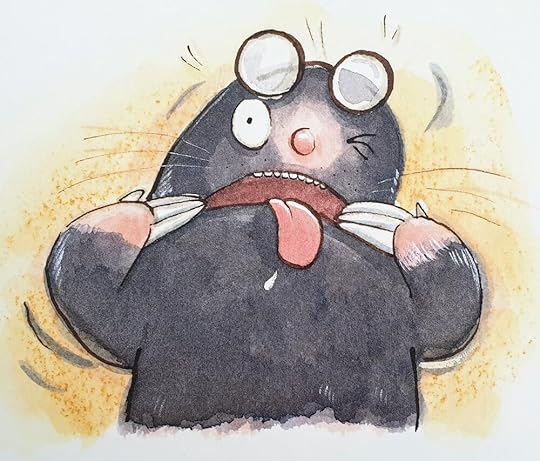
Detail from A Little Bit Anxious by Ciara Gavin (Little Tiger Press) | Illustration © 2020 by Tim Warnes
House sparrows are one of my favourite birds; should I be concerned about avian malaria?
— Member's letter, RSPB magazine
At the time, this reader's question in the RSPB magazine, Nature's Home, really amused me (readers' letters often do).
I am prone to worry - and I love birds. But really, worrying about avian malaria on behalf of house sparrows? That never featured on my radar.
Now we find ourselves at the start of the Coronavirus pandemic. And we really do have something to worry about.
Most of us are prone to worrying at some point or other. I certainly am. An anxious, obsessive hand-washing child, I have worked hard at overcoming my fears and phobias. So being told to continually wash my hands is strange to hear. And avoiding touching door handles no longer seems such irrational behaviour.
Except, of course, worrying doesn't do anyone any good.
"Therefore do not worry about tomorrow, for tomorrow will worry about itself. Each day has enough trouble of its own."
- JESUS (Mathew 6:34 - NIV)
(As a follower of Jesus, I have the reassurance that he is with me in the storm. I might not be able to change my situation, but I can choose to faithfully trust God in the middle of it.)
Coronavirus is out of our control. One day we will have a cure, until then we cannot fix this - we can only take the recommended precautions. (My wife and kids are in self-isolation for fourteen days with persistent coughs. As I write, I am reaching the end of my seven day self-isolation period, since I've had recent contact with them.) And the feeling of helplessness is horrible. So how can we support ourselves and our loved ones - our children in particular?
I believe one of the most effective ways of dealing with this is by learning to reframe negative thoughts and emotions. I'm not talking about going into denial and pretending nothing's going on. It's about being thankful - and finding joy - in the small things. Let me explain.
In my latest book, A Little Bit Anxious, Weasel is worried.He gets caught in a big, angry storm; so he builds himself a fortress - a safe place - to hide in. (I can't believe how ironic the timing of this book is.)

Detail from A Little Bit Anxious by Ciara Gavin (Little Tiger Press) | Illustration © 2020 by Tim Warnes
He thought of the storm raging outside, and it made him shiver.
The days passed, and Weasel got used to being by himself.
But one day, Weasel turns around to find a mole sitting on his couch!
"What is this place?" asked Mole.
Mole is a fantastic character! Brimming over with joie de vivre, he wants to have fun and finds the good in everything. Which causes Weasel to fret even more!
"It's not a place for visitors! It's a place to hide."
"Marvellous," said Mole. "You count to ten and I'll hide, no peeking!"
"No!" insisted Weasel. "It's not for games! It's for keeping me safe."
…
"Well, where's the fun in that?" replied Mole.
"It's not meant to be fun!" said Weasel. "Just safe."

Detail from A Little Bit Anxious by Ciara Gavin (Little Tiger Press) | Illustration © 2020 by Tim Warnes
Mole is kind and compassionate.
He gently questions and listens to Weasel, who describes the things that frighten him the most.
"The storm is scary," sighed Weasel. "And much, much bigger than me."
Right now, I think we can all relate to that.
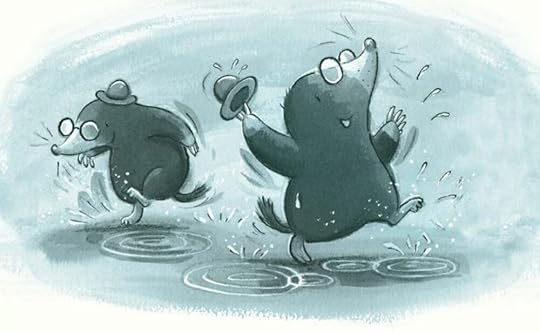
Detail from A Little Bit Anxious by Ciara Gavin (Little Tiger Press) | Illustration © 2020 by Tim Warnes
Fears don't go away just by ignoring them. They go away - or at least, their power is diminished - when we talk about them and externalise them.
Just as Mole helps Weasel do. I can't advise how best to speak about coronavirus with our kids. How could I? But if you end being confined to home with kids, you'll have to give some explanation.
Olivia Field, loneliness lead at the British Red Cross: "Talking to people about your worries, about feeling lonely, or simply just about your day, helps."
Mole then shows the worried Weasel how to reframe his thoughts, by sharing the joyful moments that stormy weather brings:
Making snowmen;
Feeling the tickle of the wind;
Splashing in puddles.
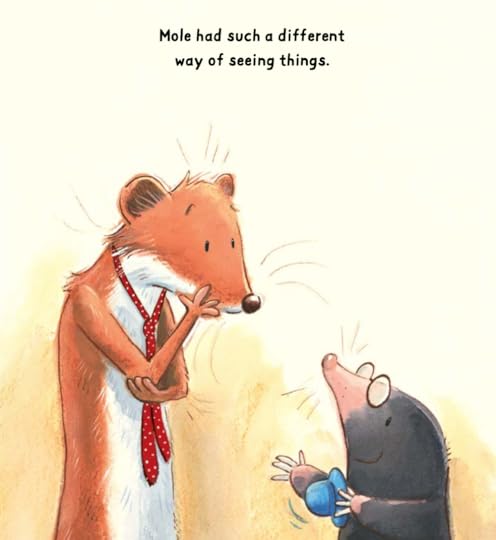
Detail from A Little Bit Anxious by Ciara Gavin (Little Tiger Press) | Illustration © 2020 by Tim Warnes
Like Weasel, we need to learn to overcome our fears and find joy - whatever the circumstances. Now, more than ever, we need to look after our mental health .
So let's take pleasure in the small things - where we can.
Let's seek to be good friends and neighbours.
during my self-confinement, I put Mole’s example into practice."But Mole," said Weasel, "what do you do when you feel afraid to face something?"
"I face it with my friend," smiled Mole.
And with that, he held out his hand.
Inspired by the things that I have surrounded myself with that bring me joy, I decided to focus on the good stuff in life. You can see the result below!
Stay safe, friends.
Good to ReadIf you or your loved ones are suffering with anxiety at this time
If coronavirus scares you, read this to take control over your health anxiety by Rhiannon Lucy Cosslett (The Guardian, 16 March 2020)
SourcesA LITTLE BIT WORRIED BY CIARA GAVIN, ILL. BY TIM WARNES (LITTLE TIGER PRESS 2020)RSPB Magazine, Nature's Home (Winter 2019) Coronavirus: How to protect your mental health by Kirstie Brewer (BBC.co.uk)Holy Bible, New International Version (NIV) via BibleGateway.comCoronavirus elderly advice: How can I look after my older relatives? (BBC.co.uk)March 13, 2020
What is it with weasels?

Development drawing for A Little Bit Anxious by Ciara Gavin (Little Tiger Press) | Illustration © 2020 by Tim Warnes
Weasels - …well, you can’t really trust them, and that’s the fact.
— Ratty, The Wind in the Willows
One of my early book memories is of a natural history series, aimed at early readers.
Technically, they belonged to my school library (a place of quiet comfort for Tiny Tim). But as I remember, for a time, I held them in a constant state of renewal, shuttling them to and from school in my chestnut leather satchel. Small and square in format, the books were a mine of information; with beautiful photographs, they were a treasure to me. I learned about squirrels, moles and mice. Badgers and bats. But it was Weasels that captivated me the most. Oh, how I dreamed of spotting one of those small, sneaky predators!
Notoriously elusive, these minuscule members of the mustelid family evaded me for years. Until one snowy day, when I watched a weasel hunting around the pots on our patio, just metres from me. Swift and slinky, it snaked his way through and around and over any obstacles in his way.
That little weasel (and they really are teeny) was a far cry from the weasels of popular culture. They don’t often pop up, but when they do, weasels generally have the misfortune of being typecast as henchmen to more powerful villains. (Most notably - and enjoyably - Judge Doom’s Toon Patrol, from Who Framed Roger Rabbit?)
What is it with weasels?! Why so maligned? A few steps along the family tree, weasels metamorphose into adorable otters and beguiling badgers. But they get landed with the simile, As quarrelsome as a weasel, and the negative phrase, weasel words (used when we need to weasel out of responsibility and accusation).
I can’t help thinking this is mostly down to the influence of Kenneth Grahame’s tale, The Wind in the Willows, in which weasels are described as ‘bloodthirsty villains.’ Since its publication in 1908, its popularity has led it to become ingrained in our collective psyche.
“Well, of course - there - are others,” explained the Rat in a hesitating sort of way. “Weasels - and stoats - and foxes _ and so on. They’re all right in a way - I’m very good friends with them - pass the time of day when we meet, and all that - but they break out sometimes, there’s no denying it, and then - well, you can’t really trust them, and that’s the fact.”
- The Wind in the Willows, Kenneth Grahame
Ratty’s right. In Toad’s absence, the Wild Wooders (weasels, stoats and ferrets - mustelids all), led by the Chief Weasel, squat in Toad Hall. And what reprobates they are!
Lying in bed half the day, and breakfast at all hours, and the place in such a mess (I’m told) it’s not fit to be seen!’ [explained the Rat. ‘M]aking bad jokes…, and singing vulgar songs…; horrid personal songs, with no humour in them.
- The Wind in the Willows, Kenneth Grahame
Toad and friends lay siege on the night of the Chief Weasel’s birthday banquet, in a bid to recapture Toad Hall. Using a secret passageway, they sneak past the armed sentries. Overhead, the sounds of debauchery and drunken behaviour ring out. “Ooo-ray-oo-ray-oo-ray-ooray!” sing the weasels as they stamp on the floor and hammer on tables.

From The Wind in the Willows by Kenneth Graham (Methuen) | Illustration © by E.H. Sheperd 1908
The Badger drew himself up, took a firm grip of his stick with both paws, glanced round at his comrades, and cried:
“The hour is come! Follow me!”
And flung the door open wide. …
- The Wind in the Willows, Kenneth Grahame
Another example, this time from the Little Grey Rabbit books, which regularly featured in my childhood:
Down in the dell lived a family of Weasels. They had a dark little house, built against a wall where nobody could see it. ... The narrow windows were covered in green moss. Only in the middle of each there was a tiny crack where the Weasels peeped out at passers-by.
- Little Grey Rabbit and the Weasels, Margaret Tempest
Aye, aye. What’s going on here then?!
The secret house is the lair of master thieves, Bad Winnie Weasel, William and Winkie. ‘During the day they robbed any one who went by.’ If that’s not bad enough, they then kidnap Little Grey Rabbit:
Suddenly William Weasel snatched her basket, and Winkie and Winnie leapt from the leaves and picked her up. They swept her quickly through the door into the house. …
“Nobody will find you. You shall be our slave.”
So Grey Rabbit knew she must make the best of it. She cooked for the fierce Weasels, and cleaned their ugly little house. ... She worked all day without stopping, or they nipped her with their sharp teeth.
- Little Grey Rabbit and the Weasels, Margaret Tempest

From Little Grey Rabbit and the Weasels by Alison Uttley (Collins) | Illustration © by Margaret Tempest
(I’m not sure that would get published nowadays…)
Or what about this: Posy Simmonds’ Lavender, a bedtime favourite when my kids were growing up. I remember the delight of my boys as the train steams ‘past a wood full of furious weasels.’ But why not a wood full of friendly weasels, waving hello? (And I do wish Simmonds had used (one of) the collective nouns for weasels: a boogle. We would have loved that!)

Detail from Lavender by Posy Simmonds (Jonathan Cape) | Illustration © 2003 by Posy Simmonds
The avarice of weasels in children’s books finally culminates in Elise Dolan’s book, WEASELS (Nosy Crow 2013), in which the mini mustelids scheme and plot world domination!
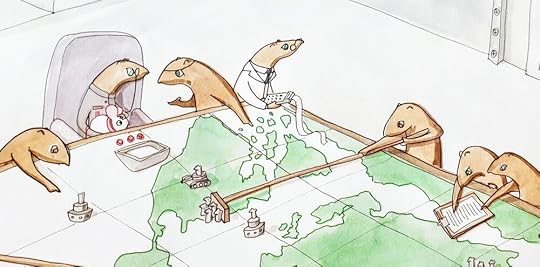
Detail from WEASELS by Elise Dolan (Nosy Crow) | Illustration © 2013 by Elise Dolan
Well, the hour has come (as Badger would say, if he were grammatically correct) for a different type of weasel to emerge.
From this motley collection of furious, rapacious (and ultimately untrustworthy) weasels, steps a timid little fellow.
My latest book, A Little Bit Anxious (re-titled Weasel is Worried for the US, which I think sounds much better) is the story of an anxious weasel. When things are going well, he’s perfectly happy, thank you. But as soon as things go off-plan, anxiety and fear creep in.
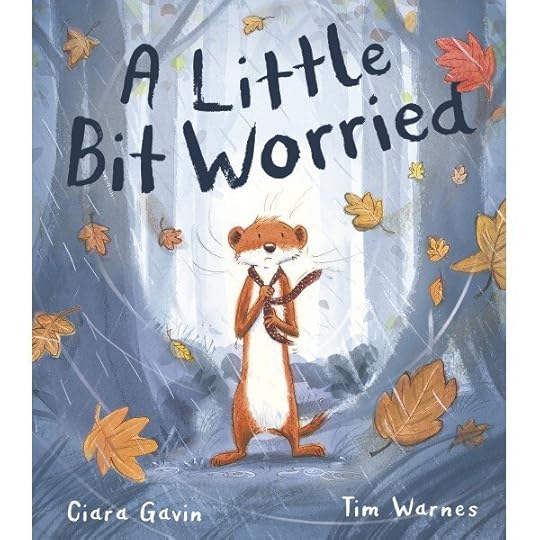
When I was offered author Ciara Gavin’s text by Little Tiger Press, I knew I wanted to do it!
For starters, it was about a weasel (although that was touch and go for a bit, as Sales considered them unpalatable)! When he gets caught in a big, angry storm, Weasels builds a fortress to hide in - but becomes trapped by his fears. Then one day, a mole appears. Mole loves to play in the wind and splash in the rain - and helps Weasel learn to overcome his fears and find joy. (One reviewer asked, Where did the mole come from? I suppose, like Toad et al., he beat the barricades by tunnelling up from his own secret passage!)
Here’s the thing: A Little Bit Anxious addresses some important mental health issues in a gentle, child-friendly way:
Anxiety
Fear
Depression
They all affect Weasel, who becomes a prisoner in his own home.
Please don’t be put off by the more sombre undertones. Because A Little Bit Anxious is peppered with joy and humour! And just as importantly, it’s great for teaching valuable skills: mindfulness and empathy.
Sadly, I have experienced firsthand the effects of mental illness - of my own, but also of family and friends. Depression, separation anxiety, panic disorders, low self-esteem. How I hate them. It’s so important that we become more open about discussing the effects - and consequences - of poor mental health, and promote positive, life-enhancing behaviours. Then we can truly live, just like Weasel’s friend, Mole (whose character and mindset transform the story into a message of hope).
‘The whole process was so organic and easy,’ wrote the designer at the end of the project. ‘It’s like this character and interpretation were just sitting dormant inside you, waiting to be splashed across the page!’
And that’s how it felt!
If you have little ones in your care, I’d encourage you to let the joy of this uplifting tale of overcoming wash over you. Weasel and Mole will show them how to:
reframe worrying thoughts and memories
find the positive in challenging situations
take pleasure in your surroundings
find joy in the small things
and be a supportive friend!
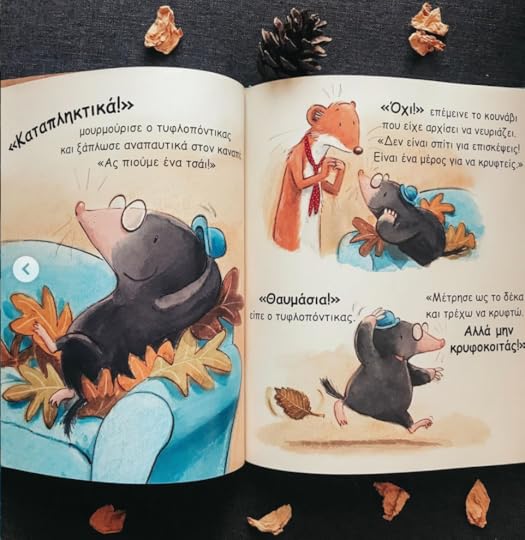
From the Greek edition of A Little Bit Anxious by Ciara Gavin (Little Tiger Press) | Illustration © 2020 by Tim Warnes | Image: @funkymama.gr (Used by permission)
A Little Bit Anxious (a.k.a. Weasel Is Worried) - available via your local bookshop or online SourcesA Little Bit Worried by Ciara Gavin, ill. by Tim Warnes (Little Tiger Press 2020)THE WIND IN THE WILLOWS BY KENNETH GRAHAME, ill. by E.H. Shepard (METHUEN 1926) Animalsandenglish.com Disney.fandom.com Little Grey Rabbit and the Weasels by Alison Uttley, ill. by Margaret Tempest (Collins 1947)WEASELS by Elys Dolan (Nosy Crow 2013)Lavender by Posy Simmonds (Jonathan Cape 2003)
March 6, 2020
How far is fair?
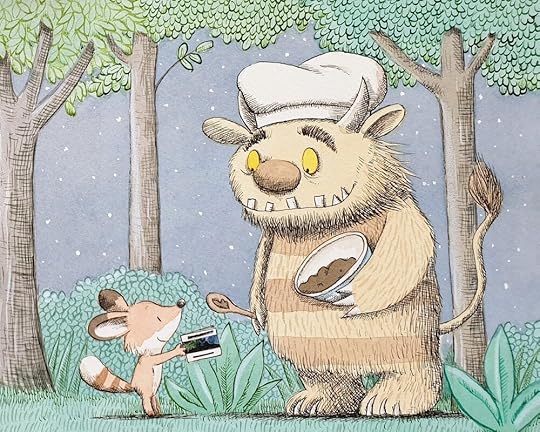
Development art: The Big Book Adventure by Emily Ford, ill. by Tim Warnes (Silver Dolphin 2018) | Image © 2018 by Tim Warnes (unpublished)
The problem with copyright enforcement is that when the parameters aren’t incredibly well defined, it means big corporations, who have deeper pockets and better lawyers, can bully people.
— Shepard Fairey
Last week’s article prompted my friend, Christ (rhymes with wrist) to message me. in the process of publishing his new book, he’s learned that the U.S. has changed its copyright laws.
He writes: ‘The protections now only apply if you submit a formal filing within the first three months of a work being released. (This is a huge change.)’ Adding, ‘I feel like I have fallen down the rabbit hole.’
Now why would the US government be eroding the rights of creators like that? It’s nonsensical, unfair and definitely harmful to the creative community.
In contrast, copyright protection automatically exists in the UK under law. As soon as you write, draw, or record something original (i.e. not directly copied or adapted from an existing work) then BOOM! it has copyright protection. (If you want, you can even stamp that dinky © symbol on your creations.)
Unsurprisingly, there are a few copyright caveats -
(An example of this would be Tim Burton’s The Nightmare before Christmas. Burton dreamt up the idea while an employee as a Disney animator. Meaning Disney owns it.)
You cannot copyright an idea. (As mentioned above - it must be recorded in some physical form.)
Copyright applies whether the creation remains unpublished or not. Therefore you must receive authorisation from the creator to use their work in any way.
‘Does this mean that every single one of the billions of pictures on the internet is either authorized by the creator or in violation of online images copyright?’ asks Danielle Prager in A Guide To Copyright and Fair Use Laws For Online Images. ‘The answer is no – and this is where fair use comes into play.’
I began writing about fair use - sometimes called ‘fair dealing’ in the U.S. - last week (before I became sidetracked by Old Mr. Bunny!) Used to describe some limited activities that are allowed without infringing copyright, the details of fair use varies from country to country.

A fair use of Paolo Nutini’s eyes! From The Big Book Adventure by Emily Ford, ill. by Tim Warnes (Silver Dolphin 2018) | Image © 2018 by Tim Warnes
Generally speaking, the Use of copyrighted material is considered fair Use when used in:
Private research
Adaptations that make readable copies for people with disabilities (e.g. a Braille version)
Educational use
Provided that:- it is solely to illustrate a point;
- it is not done for commercial purposes and will not ‘undermine sales of teaching materials’;
- the source material is sufficiently acknowledged.
News reporting (with the exception of photographs)
Provided that:- the source material is sufficiently acknowledged;
- the amount of the material quoted is no more than is necessary for the purpose.
Criticism and Reviews
Provided that:- the work has been made available to the public (i.e. is already published);
- the source material is sufficiently acknowledged;
- the material quoted is accompanied by some actual discussion or assessment (to warrant the criticism or review classification);
- the amount of the material used is no more than is necessary for the purpose of the review.
Stanford Universities Libraries’ Copyright & Fair Use web page summarises some cases from the US courts. The article has given me confidence that the use of third party material on my blog would (to the best of my knowledge) be considered allowable under Fair Use practice.Here’s why:
Copied content is credited and/or linked to the source.
Copyright owners/publishers are caused no financial harm because:
- my use does not compete with or detract from the original;
- only a small portion of the work is excerpted;
- I am not derogatory (the purpose of my articles is to highlight quality books);
- my blog is potentially of financial benefit to them - I am effectively promoting their books (which may result in book sales and library loans);
- many of my Good to Read recommendations are (at the time of publishing my articles) out of print. Therefore my copying could not diminish sales from which the creators would benefit (since authors do not receive a royalty on second-hand books), and would not adversely affect their future marketability.
- I am not capitalizing on the authors featured. My articles are available free of charge with the intent of encouraging literacy.
- I am pointing to (rather than trying to reproduce) the “heart” of my Good to Read recommendations.
Often the work copied is reproduced within the broader context of a discussion (to support my analysis) rather than a straight forward review of the book. As such, they would be considered news commentary.
- Examples include my articles Drag Queen Story Hour and Using picture books to combat racism.
Copied content is used in an educational context:
- There is a scholarly nature to my articles; their purpose is informational. It is not to ‘supplant the copyright holder’s commercially valuable right[s]’;
- they serve to help the public access books that I consider are worthy of attention: guiding you to the Good Stuff so you can give your kids a great start to their reading journey.
My use is transformative:
- its purpose is to inform the public about the value of picture books in the development of a child and to society as a whole (whereas authors/publishers are in the children’s book business to sell books, and the original material is to be shared directly with a child).
- The reproduction of video content in the context of my commentary adds something new to the videos.
I present the work in smaller versions and of inferior quality to the original reproductions.
The legalities are ultimately down to the interpretation of a court, should it ever be challenged. Even though I feel pretty secure that my use of copyrighted material falls within acceptable fair use practice, it still feels, well, a little weird. After all, copyright is the backbone of my income.
Which is why I try to contact copyright holders when I reproduce their work.
And it’s been interesting.
Often, I never hear back.
A few say, no.
Just occasionally, I receive encouraging, friendly replies like these:
Your post is lovely and very well presented. And I agree, you are within fair use. Thank you for your courtesy and for sharing the book in such a thoughtful way.
- Publisher, Enchanted Lion Books
I agree that your use of 61 words falls under Fair use. Thank you for your concern about copyright, we are very grateful…
- Sceptre Books
Jon [Scieszka] and Lane [Smith] have no problem with this and are happy to be included …
- Steven Malk, Writer’s House agent
But on the whole, the legal concept of fair use doesn’t seem to feature on the radar of most publishers. With so many hoops to jump through and forms to fill in, they don’t make it easy to get approval/permission! (Major publishers with multiple imprints are the worst, pushing one from pillar to post.)
I don’t blame the publishers for protecting their interests. But why the discrepancy in responses? And I’m left wondering why they’re happy to provide review copies for book bloggers to share, yet I’m told -
‘There is a fee charged for usage per request... If in the future you need to use any original artwork, illustration or written work ... please contact us for a quote.’
‘After a lot of discussion within the company we have agreed to you using the images ... but request that in future you ask before using and we reserve the right to charge you for any further uses of any of our author’s works.’
Finally, parody, caricature and pastiche - all are allowable under fair use dealing. The Maurice Sendak Foundation confirmed this when I asked for approval of my illustrations in the article, Are Sendak’s Wild Things Gender Queer? The Curator replied, saying they were covered by fair use since ‘homages and parodies don’t need permission.’ (Unfortunately I didn’t discover this until after publication of The Big Book Adventure - in the end all reference to the Wild Things was dropped from the book for fear of litigation.)
At the end of the day, if it went to court, what constitutes fair use is in the eye of the judge. And no one wants to end up there. These are murky (and slightly scary) waters. Once you start poking around, there’s no telling what you might discover.

Development art: The Big Book Adventure by Emily Ford, ill. by Tim Warnes (Silver Dolphin 2018) | Image © 2018 by Tim Warnes
SourcesBrainy Quotes Fact sheet P-27: Using the work of others - The UK Copyright Service WHAT’S THE DIFFERENCE BETWEEN A PATENT, A TRADEMARK, AND A COPYRIGHT? by Michael Henry (Patent Law News and Insights)Exceptions to Copyright - gov.uk A Guide To Copyright and Fair Use Laws For Online Images by Danielle Prager Copyright & Fair Use: Summaries of Fair Use Cases - Stansford University Libraries
My Life in Books
For lovers of kid lit, this memoir - My Life in Books - is intended to give you the confidence and encouragement to share your own passion; to help you make lasting connections through kids’ books.
Originally posted at www.timwarnes.com ...more
- Tim Warnes's profile
- 30 followers



